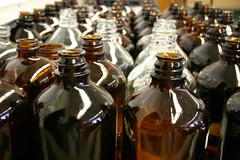I have been submerged in two very engrossing projects ... one that is testing the efficiency of wetlands in taking up pollutants (pesticides, PAHs, metals, drugs) by isolating the two major wetland plants and the soils from a source in the man made wetlands of Sweetwater Reservoir... and the other is sampling the runoff water from the parts of the Los Angeles Basin which feeds the Ballona Wetlands. Both studies can finish with many useful concepts and discoveries. They are both very labor intensive, and even with the simplest tools for collection, filtration, oxygen, sampling, and other thoughtful considerations of protecting and stabilizing pollution constituents after capture, there is just not enough people, time or money.
Liters and liters of water must be collected in hopes to capture the tiniest amount of some chemicals. The water must be prepared for storage, and then carefully kept from light. Many times the tiniest amounts, perhaps in parts per million (even trillion), can have dire effects on those (people and other animals) who drink or swim in the water. Then to isolate and find those compounds which have been shown to produce adverse affects, the equipment for finding them must be calibrated (and sensitive) to those amounts. Then the number of times the water must be collected (or for any other scientific study... the number samples ) must be high enough to demonstrate a trend - in other words - to have significance.

No comments:
Post a Comment